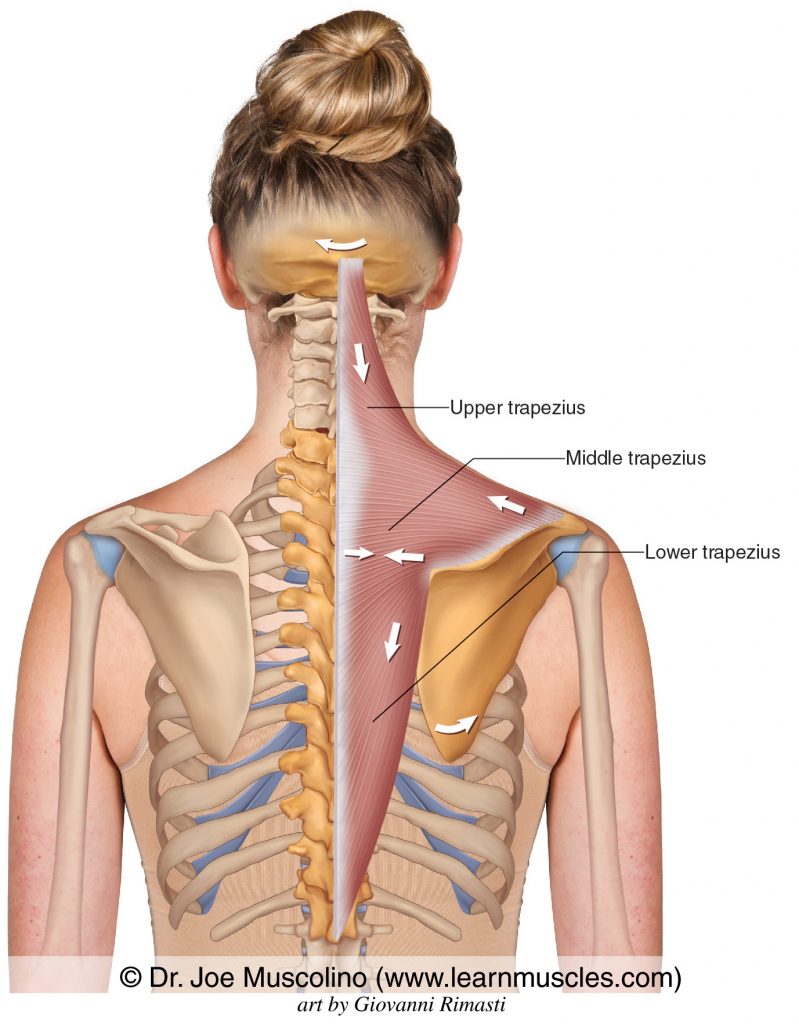- Click here for access to the full Anatomy Glossary.
- Right click on the image for a downloadable file of this muscle.
- Use of this artwork requires proper credit to be given (Permission: Dr. Joe Muscolino. www.learnmuscles.com – art work Giovanni Rimasti)

The Trapezius is usually functionally divided into upper, middle, and lower parts.
ATTACHMENTS:
- The trapezius attaches from the external occipital protuberance and the medial half of the superior nuchal line of the occiput, the nuchal ligament, and the spinous processes of C7-T12 to the lateral third of the clavicle, and the acromion process and spine of the scapula.
ACTIONS:
- The upper trapezius extends, laterally flexes, and contralaterally rotates the head and neck at the spinal joints; it elevates, retracts, and upwardly rotates the scapula at the scapulocostal joint.
- The middle trapezius retracts the scapula at the scapulocostal joint.
- The lower trapezius depresses, retracts, and upwardly rotates the scapula at the scapulocostal joint.
NOTES:
- The upper (and lower) trapezius are very active to stabilize the scapula when the arm abducts and/or flexes at the glenohumeral joint.
- More specifically, the upward rotation action upon the scapula of the upper trapezius counteracts the downward rotation action of the scapula of the deltoid. For this reason, holding the (upper) arm out in front or to the side of the body causes use/overuse of the upper trapezius.
- There greater occipital nerve (which innervates the posterior scalp) pierces through the upper trapezius. If the upper trapezius is tight (overly facilitated), it can cause greater occipital neuralgia.
